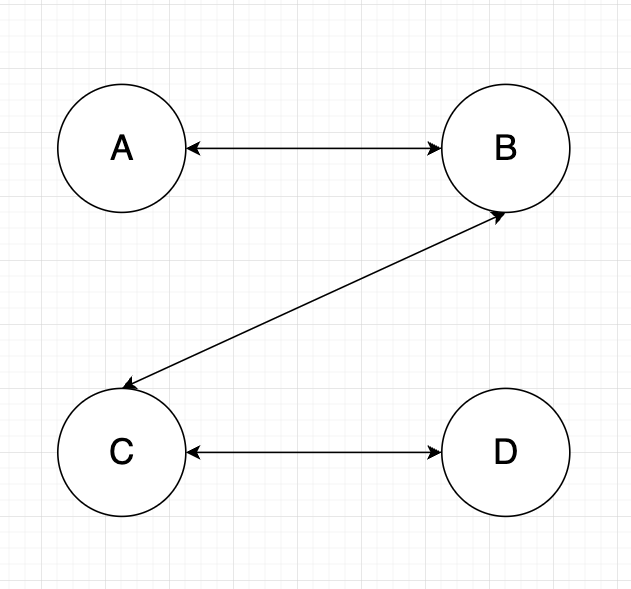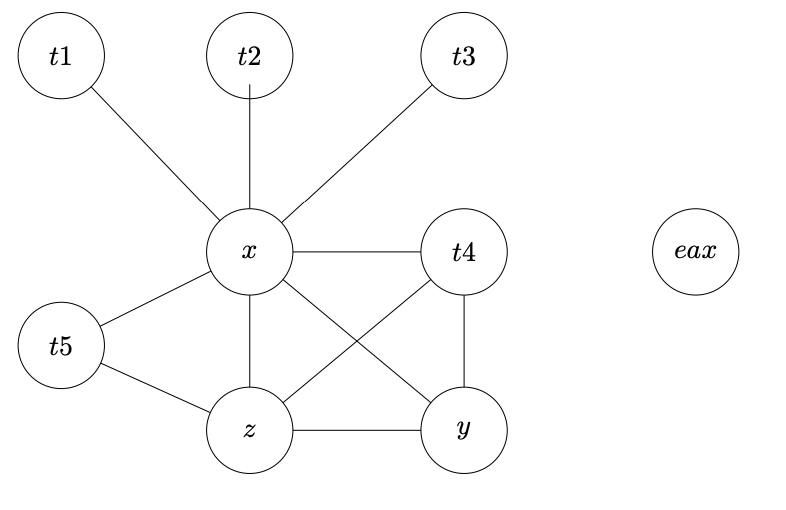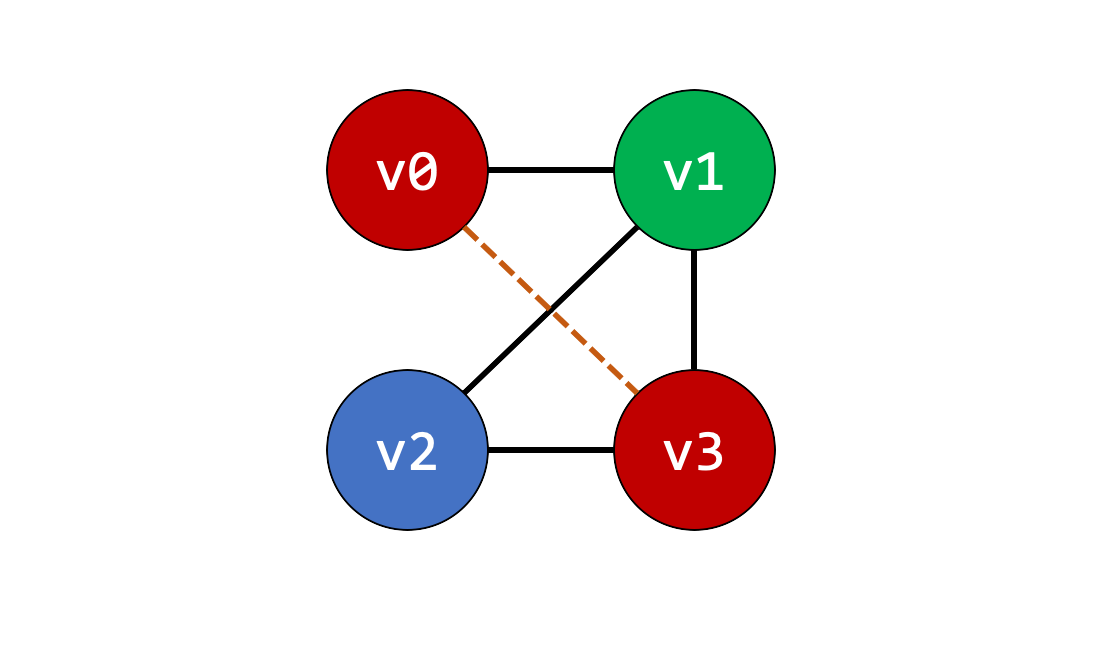Assembly Format
All assembly code in this post follows Intel syntax:
Operation Destination, Source
x86-64 General Purpose Registers
x86-64 architecture has 16 general purpose registers.
16 general purpose registers of x86-64
Special Registers
Among the 16 general purpose registers, %rbp and %rsp has special meanings that
are not recommended to be changed by program.
%rsp is stack pointer, indicates the current address of the stack.
%rbp is base pointer, indicates the start address of a stack frame.
Hence, we should avoid using %rbp and %rsp when compiling a program.
Reserved Free Register
x86 supports a grammar like
ADD 8[%rsp], %r11d,
which is actually
MOV %r12d, 8[%rsp]
ADD %r12d, %r11d
MOV 8[%rsp], %r12d
Hence, we’d better reserve a free register for such usage.
By convention, this reserved register is %r11d.
And that makes available registers to 13.
Magic 13
Now you understand why x86-64 programs only have 13 general purpose registers to use.
Remember the magic number of 13 as we will begin discussing register allocation algorithms.
Division Registers
To perform division, x86 provides a very specific instruction called idivq S
The actual arithmetic happens here is:
%rax = (%rdx:%rax) / S
%rdx = (%rdx:%rax) % S
%rax stores quotient
%rdx stores remainder
: means concatenate %rdx and %rax together, with %rdx in the higher 64 bits and %rax in the lower 64bits.
This does not mean that we cannot allocate value to %rax and %rdx,
but need to be extra careful when doing so.
Run Out of Registers?
Spilling is what will happen if a program runs out of registers. It means store a value on the stack.
As you must know, there is a huge gap in speed between accessing register and accessing main memory. Hence, if a program spills too much variables to stack, its performance will drop.
Hence, our program should allocate as less registers as possible onto stack.
Register Allocation Step by Step
Register Allocation is indeed an NP-Complete problem, so that we use a lot of approximation approaches here to solve it.
For example, determining if 2 temps interfere with each other is NP-Complete, so we used liveness and graph-based greedy algorithm to approximate it.
Step 0: What happens before register allocation?
The input of register allocation is an Abstract Assembly, preferably in Static Single Assignment (SSA) form.
SSA form means every var(temp) is assigned at most once, like
t0 <- 5 + 1
t1 <- t0 + 2
t2 <- 30
t3 <- t1 * t2
Step 1: Determine Liveness of Each Temp
Liveness basically means the time span of a temp’s existence in the code.
A temp t is live at line l if:
tempis read at lineltis live at linel + 1and not written at linel
For example:
t0 <- 5 + 1 # no temp is live at this line
t1 <- t0 + 2 # t0 is live because it is read, t1 is not live as it is written
t2 <- 30 # t1 is live because it is live at next line and not written
t3 <- t1 * t2 # t1 is live because it is read
A more real example:
main:
x <− 42 # None live
t1 <− 2 # x is live here
t2 <− x % t1 # x and t1 are live here
if (t2 == 0): # t2 and x are liver here
goto L1
else:
goto L2
L1:
x <− x + 1 # x is live here
z <− 1 # x is live here
goto L3 # z and x are live here
L2:
t3 <− 1 # x is live here
z <− t3 * −1 # t3 and x are live here
goto L3 # z and x are live here
L3:
%eax <− z * x # z and x are live here
return # eax live here beacuse it is read
Step 2: Build Interference Graph
The vertices of this graph are interference, which means that these 2 vertices existed in the same time and thus can not be allocated to the same register.
We have 2 ways to calculate interference:
Method 1
Add an edge between t1 and t2 if t1 and t2 are live at the same line.
Method 2
- For
d <- s1 + s2, add an edge betweendandt, for everytlive at next line. - For
d <- s, add an edge betweendandtfor everytthatt != slive at next line.
Usually, method 2 is better than method 1.
Step 3: Color the Graph
The next step is to color the interference graph. We will use number to represent colors. Since we only have 13 registers, we can only use 13 colors.
Greedy Coloring Algorithm
for c in 1 ... 13:
for v in vertices:
if v is not colored and v's neighbors are not colored in c:
color v with c
Not Perfect Answer

Different Ordering can produce different outcomes
A -> B -> C -> D: 2 colors
A -> D -> C -> B: 3 colors
Hence, we will run MSC algorithm to find optimal ordering before coloring the graph
Max Cardinality Search Algorithm
Input: An interference graph
Output: A ordering of vertices that will produce the minimum number of colors if used by greedy coloring
Algo
# set all weights to 0 initially
weight = {}
for v in vertices:
weight[v] = 0
# find ordering
order = []
visited = set()
for i in range(number_of_nodes):
v = node_with_max_weight
order.append(v)
for n in neighbor(v):
if n not in visited:
weight[n] += 1
visited.add(v)
return order
Suppose we have the following interference graph:

Suppose we pick t1 first, we will have ordering:
t1 -> x -> t2 -> t3 -> t5 -> z -> y -> t4 -> eax
Pre-Coloring
Some registers are reserved for special usage, and thus need special handling:
%rax is used to store return value.
%rax and %rdx are used to store quotient and remainder in division.
